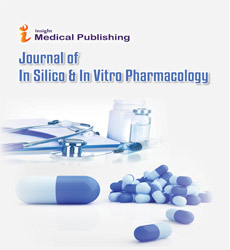Prevention of drug induce cardiovascular diseases
Amna Ibrahim Al Muaini
Tawam hospital, United Arab Emirates
Received Date: 2022-07-05 | Accepted Date: 2022-07-12 | Published Date: 2022-07-19Abstract
Cardiovascular diseases are a leading cause of death all over the world that affect public health significantly. Many risk factors are associated with cardio vascular disease, however one of the emerging risk factors, that can be managed, and prevented is the drug induced one. Many drugs are contributed in cardiotoxicity that can further increase mortality & morbidity. Risk stratification, prevention, identification, and treatment of these toxicities can vastly improve patient care. Possible mechanisms for cardiotoxicity include both direct and indirect effects to the Cardio vascular system. Many chemotherapies and immunotherapy as Anthracyclines, Vascular Endothelial Growth Factor Inhibitors, BCR-ABL Kinase Inhibitors, Immune Checkpoint Inhibitors, and Ibrutinib are incorporated in different types of cardiotoxicities. On the other hand, there are other groups of drugs may be associated with developing different types of arrhythmias including supraventricular tachycardia, sinus bradycardia, atrioventricular nodal blockade, atrial fibrillation, ventricular tachycardia, and Torsade de points. Also, Blood pressure elevation can be induced by different agents like nonsteroidal anti-inflammatory drugs (NSAIDS), corticosteroids, Psychostimulants, Antidepressants and Antipsychotics drugs. Although myocardial ischemia results from an oxygen supply and demand mismatch such case may be induced with different mechanisms but it can occur acutely due to many drugs such as nonsteroidal anti-inflammatory drugs, HIV medication. Regarding to heart failure Medications known to cause or exacerbate HF are too numerous, and can exacerbate condition with different mechanisms like dexmedetomidine, non-dihydropyridine Calcium channel blockers, cilastazole, and sitagliptin. Clinical pharmacist may play a relevant role regarding prevention and mitigate the risk of cardiovascular disease through different pathways including medication review, monitoring, reconciliation, drug safety management, and patient education. This will help in developing treatment plan to monitor and prevent any cardiotoxicities.
Open Access Journals
- Aquaculture & Veterinary Science
- Chemistry & Chemical Sciences
- Clinical Sciences
- Engineering
- General Science
- Genetics & Molecular Biology
- Health Care & Nursing
- Immunology & Microbiology
- Materials Science
- Mathematics & Physics
- Medical Sciences
- Neurology & Psychiatry
- Oncology & Cancer Science
- Pharmaceutical Sciences
